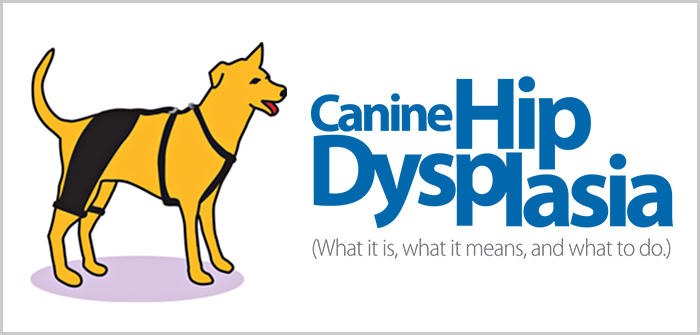Information Guide On Canine Hip Dysplasia- Know The Basics!
Hip Dysplasia is one of the most common skeletal diseases seen in dogs. Some breeds are more likely to have this malformation than the others. Large breeds such as Saint Bernard, German shepherd, Great Dane and Labrador retriever are more vulnerable than the smaller breeds for this hip disease. Small breeds may rarely show the clinical signs of hip dysplasia.
Most of the pet owners may be unaware of the basics of hip dysplasia. However, it is vital to be informed on this condition to provide the required care to the pet from beginning. Thus, here is a brief information guide on hip dysplasia!
What is Hip Dysplasia?
The hip joint is made of ball and socket. The failure of hip joints to grow completely is called malformation. This malformation does not let the ball portion and the socket to meet one another. As a result joints grind and rub instead of sliding smoothly during any movement. This condition is termed Hip Dysplasia.
How does a dog acquire this condition?
Genetics and environment are the two contributing factors of this condition. Most of the canines inherit hip dysplasia and may show its signs right from their puppyhood. In such cases you might observe the symptoms of this condition after four months of age.
However, pets are affected at their ripe age when environment plays a role in hip dysfunction. Osteoarthritis or other skeletal inflammation and chronic deterioration may contribute in developing hip dysplasia in older dogs. To conclude, these may become the causes of this malformation in pets:
- Laxity
- Genetic susceptibility
- Pelvic muscle mass
- Nutritional deficiency
- Chronic deterioration
- Obesity
What are the symptoms of hip dysplasia?
The signs of this joint disease may depend on various factors such as laxity or looseness of joints, the intensity of joint inflammation and the period of the disease. The early signs of this disease are loose joints and the conditions related to it. The later disease signs include joint deterioration and osteoarthritis. Other symptoms that you may observe are:
- Difficulty in rising
- Disinclination towards physical activities like running, jumping pr climbing
- Hind limb lameness
- Swaying gait or “bunny hopping”
- Laxity
- Pain in joints
- Expansion of shoulder size because of entire weight being exerted on the front limbs
- Muscle mass loss in thighs
- Hind legs unnaturally close to each other
How is hip dysplasia diagnosed?
A complete physical examination may be required to diagnose hip dysplasia in your pooch. Your vet may conduct complete blood count test, an electrolyte panel, urinalysis and test for blood chemical profile. Inflammation and other contributors may be noted in these tests. X-rays are necessary to see the position of hip joints and their condition. You veterinarian may diagnose with the help of the tests, x-rays results and your dog’s genetic history.
It is important that you keep an eye on your pup if his ancestors had a medical history of hip dysplasia. The treatment of this condition may include change in diet and the veterinarian may suggest several joint care treatments and to give hot water treatment to the pooch. Make sure that your pet has comfortable bedding and make it warm with appliances if possible.


